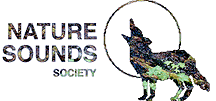NSS Home Page  Nature Sounds Newsletter Nature Sounds Newsletter  Spring 1995 Spring 1995  Ambisonic Sound Technology Pt. 2 Ambisonic Sound Technology Pt. 2
|

|
Ambisonic Sound Technology Pt. 2
by Jeffrey Silberman Soundfield Recordist Owner SurroundWorks Multichannel discrete digital surround sound is here now and is here to stay. This article is a follow-up to the earlier one describing in detail the technology of Ambisonics. Ambisonics has been around for some 20 years, but seldom implemented due to a shortage of decoding hardware and encoded software. At last, ambisonic hardware is commercially available, and the delivery of the requisite multichannel software is now technically and economically practical for most end users. For professional applications, including theme parks, virtual reality presentations, museum exhibits and planetariums, as well as concert sound production, Cepiar, Ltd. of the UK currently markets an Ambisonic surround sound decoder, the Ambi-8x, for the reproduction of Pantophonic (horizontal) and Periphonic (vertical) surround sound from 4-channel B-Format, 2-channel UHJ, or conventional stereo program material. As was explained in the last newsletter, A-format is a set of 4 signals derived from a special microphone called the Soundfield (though not exclusively so derived). The Ambi-8x decodes these signals to feed a matrix of up to 8 loudspeakers. The addition of another Ambi-8x will increase the number of balanced loudspeaker feeds to 16, and so on. In addition to the 10-pin B-format input, individual line inPuts are provided for each loudspeaker output in order to cascade other decoders (For instance, one could feed the Left, Center, Right, Left Surround, Right Surround and subwoofer outputs of a Dolby 5.1 decoder into the respective line inputs/speaker outputs of the Ambi-8x). In addition to B-Format decoding, the unit also has a balanced 2-channel input for decoding UHJ encoded signals or for decoding conventional stereo program material (contact me for a UHJ discography). Bear in mind, no logic or "steering" control is used to localize the audio signals; localization is contained within the phase and amplitude relationship of the B-Format and UHJ signal. Four loudspeaker outputs can be arranged in a square or a rectangle. When the decoder is ordered from the factory, the ratio of width/length of the rectangular layout is specified so that the proper decoding modules can be installed. For more realistic soundfields, the Ambi-8x can be configured for five loudspeakers individually separated by 72 degrees, 6 loudspeakers arrayed in a hexagon, or 8 loudspeakers arranged in an octagon, with spacings of 45 degrees. In order to deliver B-Format software to the Ambi-8x, the 8-track Modular Digital Multitracks, such as the Alesis ADAT (now under $3,000) can be employed, and when interfaced with a Rane PAQRAT ($999), the ADAT becomes a 6-channel 20-bit (or a 4-channel 24-bit) player/recorder. In conjunction with the Soundfield microphone, B-Format ambisonic sound production is at hand! For more information about ambisonic production and the Ambi-8x, as well as consumer decoders, please contact me. I invite anyone interested in surround sound to audition B-Format environmental recordings in my Mill Valley studio. Finally, there is an Internet mailserve devoted to surround sound to which one can subscribe by requesting so at the following e-mail address: jrusby@darkwing.uoregon.edu. |

|
||
Articles from Spring 1995
Nature Sounds Newsletter NSS Home Page |

|
This site and its contents copyright © 1996-2003 The Nature Sounds Society. About this web site |

|